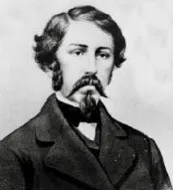
CONFEDERATE QUANTRILL CAPTURED & KILLED
The ruthless Confederate guerrilla Captain William Quantrill, the commander of the infamous Quantrill’s Raiders, met his final demise in a lonely Spencer County, Kentucky field. Family Tree Nuts teamed up with Mr. Davis Downs, a lifelong resident of Spencer County, Kentucky, who grew up, and still lives about a mile and a half form where Quantrill was shot and captured. Mr. Downs was present and participated in the 1957 ceremony when the historical marker was dedicated, in the map dot community of Wakefield. He was in seventh grade and was asked to take part in the ceremony because he had written a book report on Quantrill. Joe Creason, who was a writer for The Louisville Courier Journal was also asked to participate. The remainder of this article is the information that Mr. Downs shared with us.
During the Civil War, the Wakefield community contained mostly southern sympathizers and that is one of the reasons Quantrill located his guerrillas in the area when they came to Kentucky from Missouri. Many of the men had relatives in the area as well so they used the it as somewhat of a haven while they conducted raids and commandeered horses and supplies.
William Quantrill was he was born 31 July 1837 in Canal Dover, Ohio. It is now known simply as Dover and is a little bit northeast of Columbus. His father was the principal of the high school that William graduated when he was 16 years old. After he graduated William bounced around and he had a few rough years. At times he taught school in several states including Kansas, Illinois and Indiana.
William is known for his Confederate service but he didn’t start out that way and at one time he supported the abolitionist movement. All that changed when he had again fallen on hard times financially around 1860, and he began to ride with a group that caught escaped slaves and returned them back to their owners for a bounty.
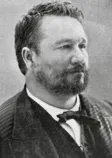
In 1861, he ended up in Texas, where he joined up with Joel B. Mayes, who was half Cherokee and half Scots-Irish. It was while riding with Mayes and his Confederate 1st Cherokee Regiment, he learned the guerrilla tactics of swift and brutal attacks. Today many are shocked to learn of Cherokee units that fought for the Confederacy. It was certainly complicated times.
A year later, William returned home to build his own unit, which will be known as Quantrill’s Raiders. His unit was comprised of men like William “Bloody Bill” Anderson. Cole Younger, and Frank and Jesse James. Mr. Downs told us that some of his cousins rode with Quantrill and that is one of the reasons that Quantrill was using the area as somewhat of a base of operation.
Quantrill’s Raiders terrorized all over Kansas, Missouri and Texas, where they raided supplies and engaged with Union troops. They looted and burned cities, terrorized citizens and they killed many people. The most bloody and infamous event happened on 31 August 1863 in Lawrence, Kansas. Here Quantrill’s men raided and killed 150 men and boys. They did spare the women and there were reports that wives would lay down on top of their husbands, pleading for their lives, but Quantrill’s men would just stick their Colt 1851 six-shooters under the women and shoot the husband’s right under them.
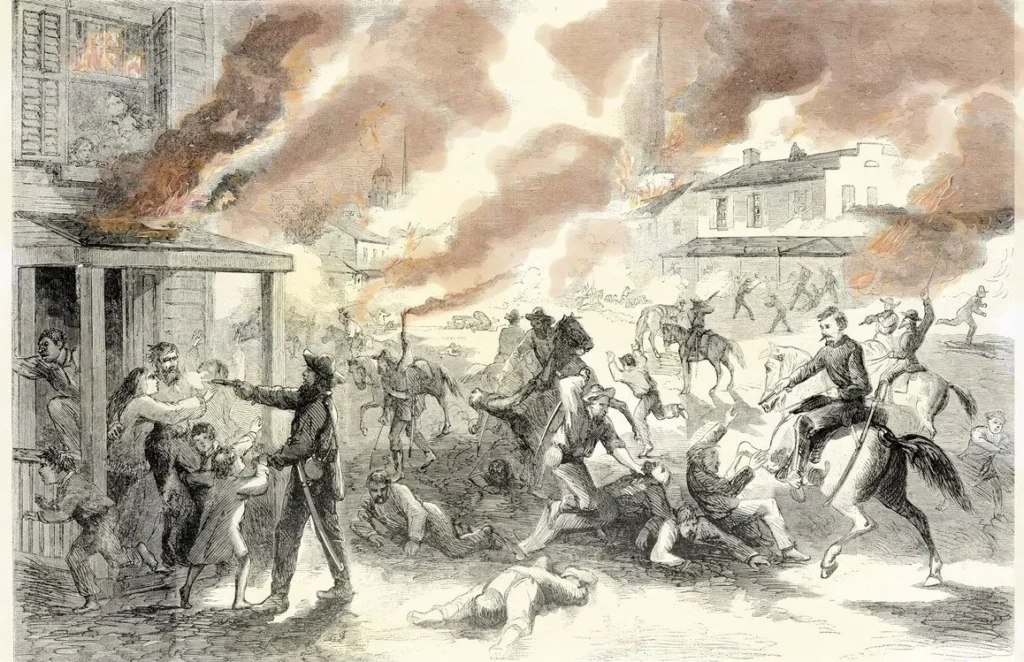
They were a ruthless bunch and they didn’t call William Anderson “Bloody Bill” for nothing. One-time, Bloody Bill was with a group that captured 20 Union troops at a train station and they lined them up on the ground and went down and shot and killed every one of them. One of Quantrill’s goals was to bring fear throughout the land and that was something that they were very good at.
Like many outfits like Quantrill’s, the men began to fight amongst each other and split off into their own smaller groups. By the end of 1864 Quantrill was left with only a few dozen men so in January 1865 he moved into Spencer Nelson County, Kentucky and teamed up with Marcellus Jerome Clark, also known as Sue Mundy.
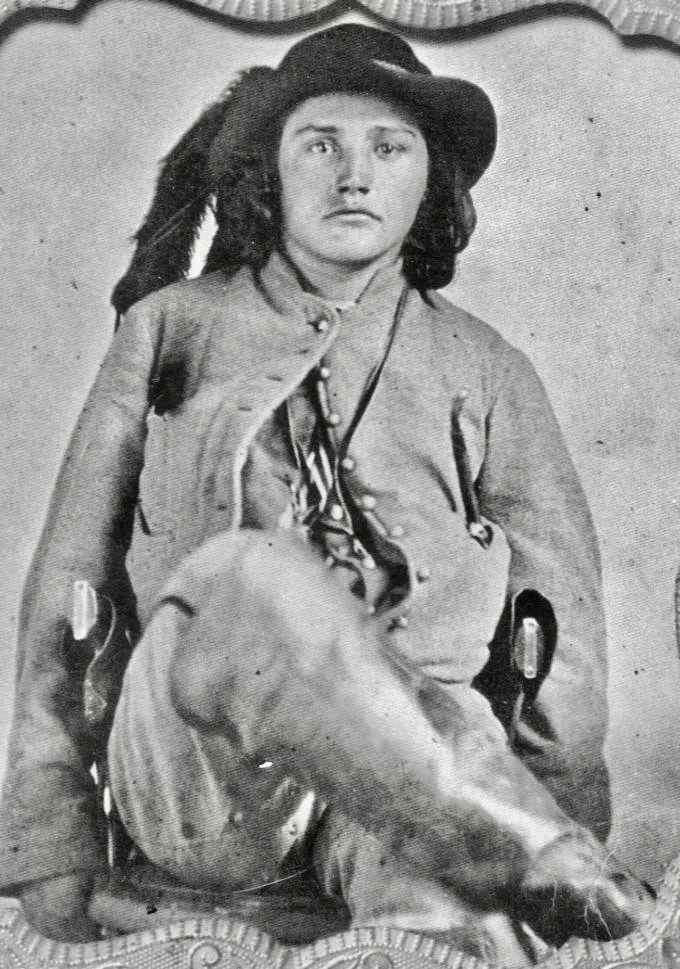
After several weeks of raiding into the Spencer and Nelson County area, on the rainy day of 10 May 1865, Quantrill and his men were at the farm of James Wakefield, just outside of Wakefield, Kentucky. Quantrill was taking a nap in the hay loft. His men were down having a corncob fight and all of a sudden, one of the men shouted “here they come!” and it was the bounty hunter Ed Terrell out of Shelbyville with about 20 troops.
Terrell and his men rode down on Quantrill’s men and opened fire. Quantrill came down out of the loft and attempted to jump on a horse but the horse was fresh and wasn’t used to gunfire. The shots made the horse bolt. At the same time one of Quantrill’s best men, Dick Glasscock took off down the ridge near a draw but was shot and killed. Another of Quantrill’s men, Clark Hockensmith, came up to Quantrill to help and while Quantrill tried to get up on the back of his horse, Hockensmith was shot and killed and Quantrill was shot in the spine.
Some more of Quantrill’s men got away by escaping to a pond where they hid in the cattails with just their noses sticking out until it was safe to escape. That pond has now since been bulldozed in.

They took Quantrill that evening to the home of James Wakefield, there on the same property. That evening, Frank James came over from Samuels Depot in Nelson County to visit with him and to say goodbye. Quantrill remained there another day and then they loaded him into the back of a wagon and loaded with straw and took him to Louisville, Kentucky. Dick Glasscock is buried five miles south of the scene in Bloomfield, Kentucky in the Bloomfield Maple Grove Cemetery and Clark Hockensmith is buried just adjacent to that in Old Bloomfield Cemetery. Their graves can be visited today.

When Quantrill arrived in Louisville, he was put in the prison hospital and in about three weeks he died. One of the most interesting things is the fact that Quantrill has three graves. He was first buried an unmarked, now marked grave in St. John’s Cemetery in Louisville.
Later, a boyhood friend of Quantrill’s named William W. Scott came down from Ohio to investigate what had happened to him and reported to Quantrill’s mother. His mother then came down to investigate it and asked Scott if he would exhumed Quantrill’s bones and take them to Dover, Ohio. This became Quantrill’s second grave but Quantrill’s remains were not intact because likely some were left behind in his first grave and Scott kept some bones and some hair and sold them sold the because Quantrill was very famous.
In 1990, the Missouri Sons of Confederate Veterans rounded up a few bones and some hair and buried those in Higginsville, Missouri making his grave in Missouri, his 3rd grave.
William Quantrill lived a short but very interesting life that was full of ups and downs. His legacy and world-wide fame lives on even today where he is the subject of many reenactments and discussions. Germany even has several “Quantrill Clubs” where members discuss the Civil War. Quantrill is the type of man in history that is a hero to some and a villain to others. His name and stories will live on long into the future. Be sure to see the video from the location in the link at the bottom.
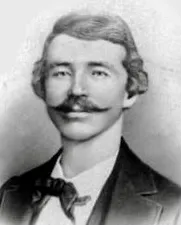
It should be mentioned that small Spencer County, Kentucky is not only the site of Quantrill’s demise but has many other notable historical figures. Jacob Yoder, who many say invented the flat boat had his house Vaucluse in the area. Richard Taylor, one of the first white men to take a boat from Pittsburg to New Orleans and the father of President Zachary Taylor, owned the land that the town Taylorsville was founded. Spier Spencer lived in the area and later commanded the famous Yellow Jacket Militia that fought at the Battle of Tippecanoe. Spencer County is named after him. Felix Gundy Stidger the famous Civil War spy that may have saved the Union, lived in Taylorsville. Finally, Spencer County was the home of James Morrison Heady, the “Blind Bard of Kentucky” who made many inventions to the assist blind. All these stories are documented in video on the YouTube channel of Family Tree Nuts.
– Colonel Russ Carson, Jr., Founder of Family Tree Nuts
